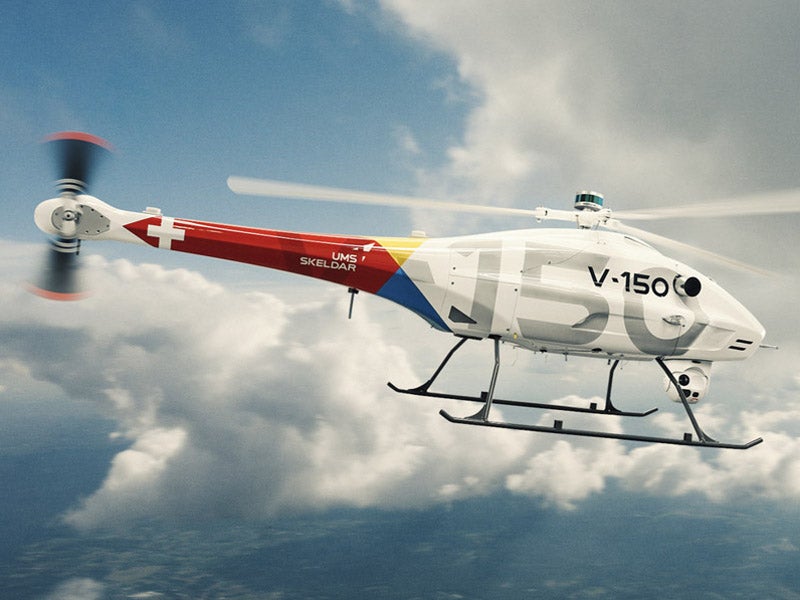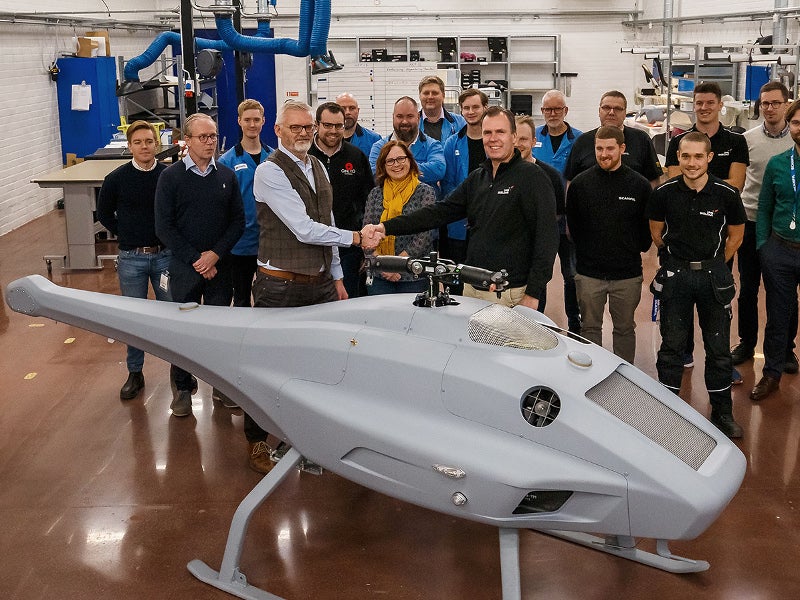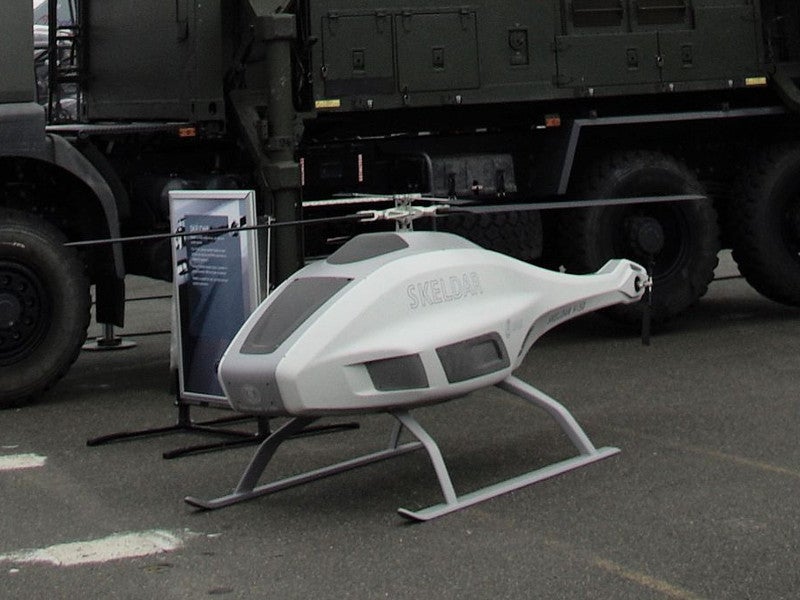SKELDAR V-150 is an advanced vertical take-off and landing (VTOL) rotary unmanned aerial vehicle (UAV) being developed by UMS Skeldar to support tactical missions.
Formed in February 2016, UMS Skeldar is a joint venture between UMS Aero Group (53%) and Saab (47%). The company designs and manufactures remotely piloted aircraft systems (RPAS) and is specialised in VTOL and fixed-wing UAVs.
The rotary-wing V-150 UAV will have the capacity to operate in support of defence forces, blue light forces, surveillance operations, and homeland security.
Saab officially launched the first Skeldar V-150 UAV system at the Eurosatory exhibition in Paris, France, in June 2006. The new VTOL platform was unveiled at the UMEX 2020 exhibition held at the Abu Dhabi National Exhibition Centre (ADNEC), in February 2020.
The SKELDAR V-150 rotary UAV complements the company’s larger SKELDAR V-200 platform which is designed to perform maritime operations.
Saab selected Nordic Aircraft for providing composite parts including tail booms, integrated fuel cells, body panels and rotor blades for the V-150 UAV.
SKELDAR V-150 VTOL UAV design and features
SKELDAR V-150 is a fully automated high-performance UAV which has a fuselage length of 3.2m, a width of 0.9m, height of 1m and rotor diameter of 3.5m. It can conduct autonomous operations from take-off to landing and can be deployed by a two-person crew within 15 minutes upon its arrival on site.
V-150 is an international traffic in arms regulations (ITAR)-free UAV with an efficient design. It requires only national flight certification as its maximum take-off weight (MTOW) is less than 150kg.
The standard version includes training package, full operations and maintenance manuals and flight management software ensuring safe operations.
The UAV features full avionics system, one remote pilot station (RPS), redundant command and control, encrypted data link, and an integrated autopilot system. Its modular design allows customisation and high maintainability and less turn-around time during operations. The multi-role rotorcraft’s small logistical footprint allows users to store it in small hangars.
The unmanned aircraft can be deployed to support both land-based and maritime missions. The turbine engine propulsion system of the vehicle makes it suitable to carry out maritime operations including border patrol, coast guard, and maritime surveillance.
The modular RPS of the SKELDAR V-150 UAV’s RPS can be configured according to client requirements.
SKELDAR V-150 mission payloads and sensors
SKELDAR V-150 VTOL has multiple payload flexibility across two payload bays, including up to 30kg in the main bay and up to 12kg in the nose. The bays provide enhanced flexibility with multiple payload options.
The payload configuration for land-based operations includes signals intelligence (SIGINT) and electro-optical/infrared (EO/IR). Potential applications are emergency response missions, search and rescue (SAR) missions for blue light forces, firefighting and interdiction of drug trafficking. The SIGINT payload is responsible for the identification of targets and sending the location to the mission management system, while the EO/IR system captures imagery.
The payload can also include ground moving target indicator (GMTI), wide-area motion imagery (WAMI), Lidar, hyperspectral and multispectral cameras for airborne remote sensing, and mission customised pods. The WAMI sensors allow for real-time intelligence, surveillance and reconnaissance (ISR) of large areas.
The rotorcraft is fitted with a tactical radar system, which enables a SAR range of up to 16km, moving target indication (MTI) of 12km and detection range of 12km and 55km for rafts and container ships, respectively.
A combination of EO/IR sensor and small tactical synthetic aperture radars (SAR) can be integrated into the system to provide actionable real-time intelligence during maritime operations. Different modes such as spotlight, strip map, and wide-area operation support enhanced maritime surveillance and detection of moving targets.
SKELDAR V-150 VTOL UAV performance
The UAV is powered by a turbine engine propulsion system which burns heavy fuels including A1 and JP8 jet fuels.
The propulsion system enables the UAV to run at a maximum speed of 120km/h. The VTOL has an endurance of 2.5 hours, which can be increased to four hours through modifications.
The platform has an MTOW of 150kg, maximum data link range of 100km, and a service ceiling of 3,048m.






